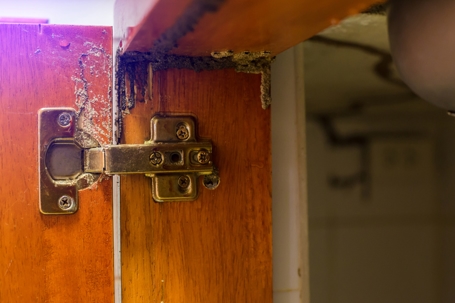Termites are one of the most destructive pests homeowners face. These tiny insects can cause significant damage to a house by chewing through wood and other materials used in the construction of your home. Unfortunately, termites can be hard to detect until the damage is already extensive.
So, what attracts termites to your home in the first place? Understanding these factors can help you take the necessary steps to protect your property.
1. Moisture
Termites thrive in moist environments. They need water to survive, and moisture around your home can provide the perfect habitat for them. Leaky pipes, poor drainage, or even a clogged gutter can lead to excess moisture that attracts termites. Basements and crawl spaces that are damp and poorly ventilated are also prime spots for termites to settle.
How to avoid this:
- Fix any leaks or plumbing issues immediately.
- Ensure proper drainage around your home.
- Install a dehumidifier in your basement or crawl space if necessary.
2. Wood-to-Ground Contact
Termites are highly attracted to wood, which is their primary food source. When wooden structures like porches, decks, or fences have direct contact with the ground, it provides an easy entry point for termites to access your home. Additionally, firewood or lumber stacked against your home can invite termites into your living space.
How to avoid this:
- Keep firewood and lumber stored at least 20 feet away from your house.
- Use termite-resistant materials for decks and fences.
- Ensure wooden structures are elevated off the ground.
3. Mulch
While mulch is great for landscaping and maintaining soil moisture, it can also be a magnet for termites. Mulch, especially wood-based types, provides food and shelter for termites. When mulch is spread too close to your home, termites can easily move from the garden into your walls.
How to avoid this:
- Use non-organic materials like gravel or rubber mulch near your home’s foundation.
- Keep mulch at least 15 inches away from the foundation of your house.
- Limit the depth of mulch layers to reduce moisture retention.
4. Cracks and Openings
Termites are small, and they can easily slip through cracks in your foundation, walls, or roof. Any openings in your home, no matter how tiny, can serve as an entry point for termites. Once inside, they can begin feeding on the wood and other materials in your home.
How to avoid this:
- Seal any cracks or openings in your foundation and walls.
- Regularly inspect windows, doors, and rooflines for gaps.
- Install screens on vents to keep termites from entering.
5. Dead Trees and Wood Debris
Termites are attracted to dead or decaying wood, which provides an easy food source. If you have dead trees, branches, or wood debris in your yard, it can serve as a beacon for termites. From there, it’s only a matter of time before they move toward your home.
How to avoid this:
- Remove any dead trees, stumps, or wood debris from your yard.
- Trim back tree branches that are too close to your home.
- Regularly clear your yard of leaves and other organic debris.
Protect Your Home from Termites with Our Expert Pest Control Services!
Termites can cause extensive damage if they are not controlled. By eliminating the factors that attract them, you can significantly reduce the risk of an infestation. If you suspect that termites have already invaded your home, it’s essential to contact a professional pest control service. They can inspect your property, provide treatment, and help protect your home from future infestations.
Reach out to EnviroCare today at (205) 649-5278 to learn more.

